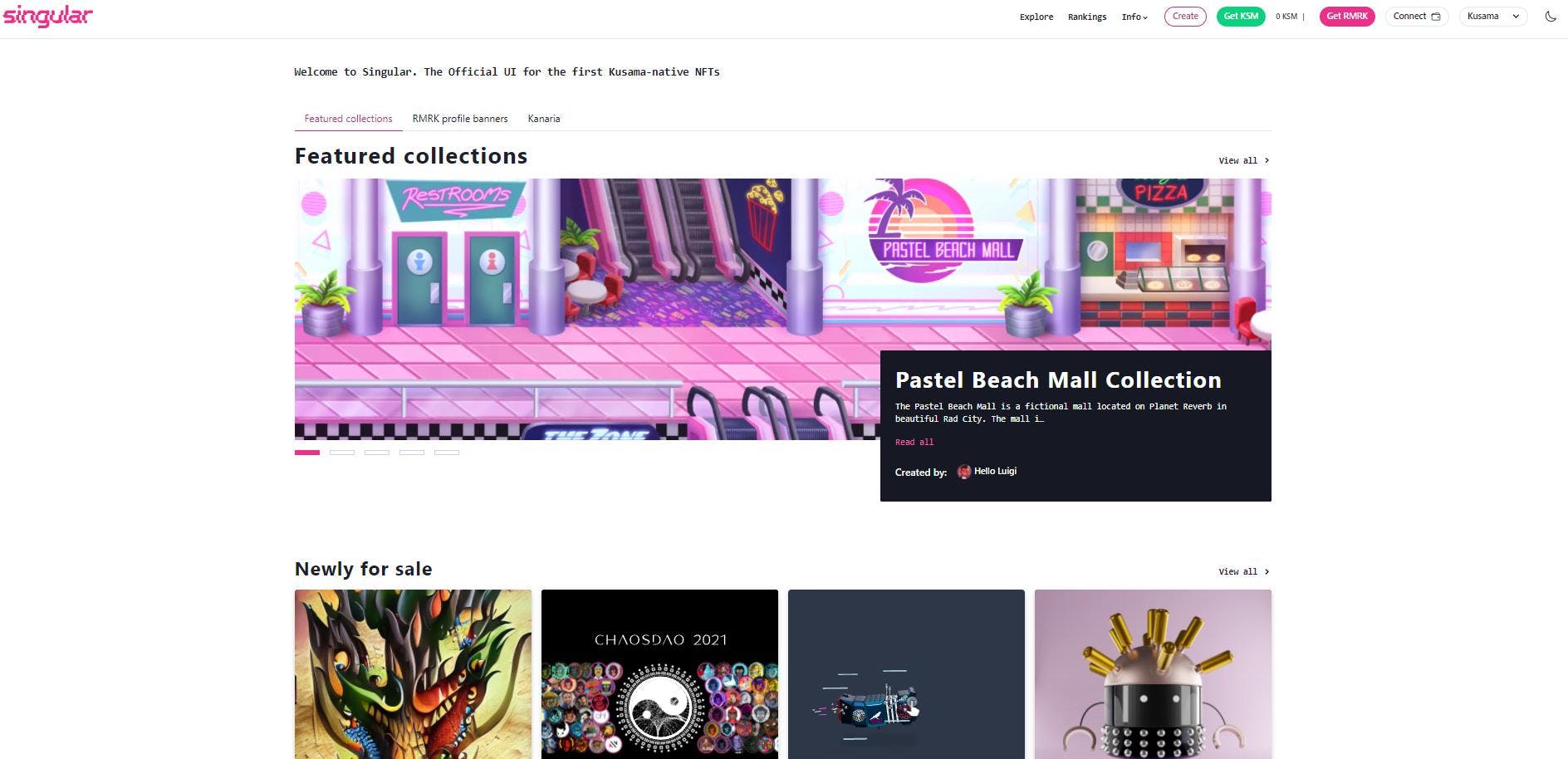Creating, Selling, Listing, and Gifting NFTs
How to mint an NFT
Step 1


Step 2
Click the Create button at the top of the site.


Step 3
On the next page, you will be asked to select which network you will like your NFT to live on.
NOTE: As at the time of writing this guide, only Statemine and Kusama are listed, but this will change in future with Singular deploying to more chains (Moonriver soon). For the sake of this guide, we will select Kusama.


Step 4
On the next screen, click Create a collection.
NOTE: In order to stay aligned with and compatible with other NFT standards, Singular does not allow minting of standalone NFTs. Thus, even if you only want to mint a single NFT, you will have to create a collection. You can choose to mint all your NFTs in a single collection or create new collections as you see fit. Think of collections like an album or EP that can contain one or more NFTs (songs).


Step 5
On the create a collection screen, input your collection’s metadata.


Note that this field supports markdown. Here is that explains what markdown is and how to use it (in case you’re unfamiliar with it.)
Step 6


Step 7
Once the transaction goes through, your new collection will be visible on the create an NFT page. Now select the newly created collection.


Step 8
Next, mint you new NFT:


Step 9
Click create. Note that you’ll need some KSM to complete the transaction. Don’t worry though, each mint costs around 3 cents. Thus, $5 can mint over 100 NFTs.
Step 10
Confirm the transaction in the polkadot.js extension popup.


Step 11
Once the transaction goes through, your new NFT will now be available on the Singular NFT marketplace.


If you get stuck and need help, don’t worry, come join us in our social channels to ask for support– or .
Want to print your doc?
This is not the way.
This is not the way.

Try clicking the ⋯ next to your doc name or using a keyboard shortcut (
CtrlP
) instead.